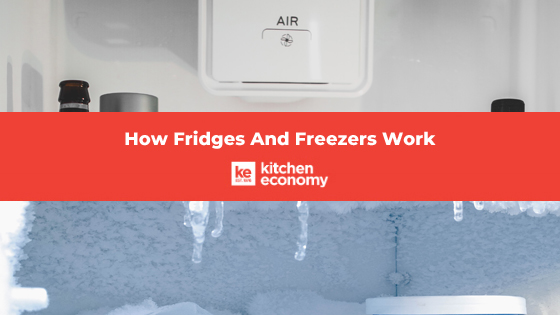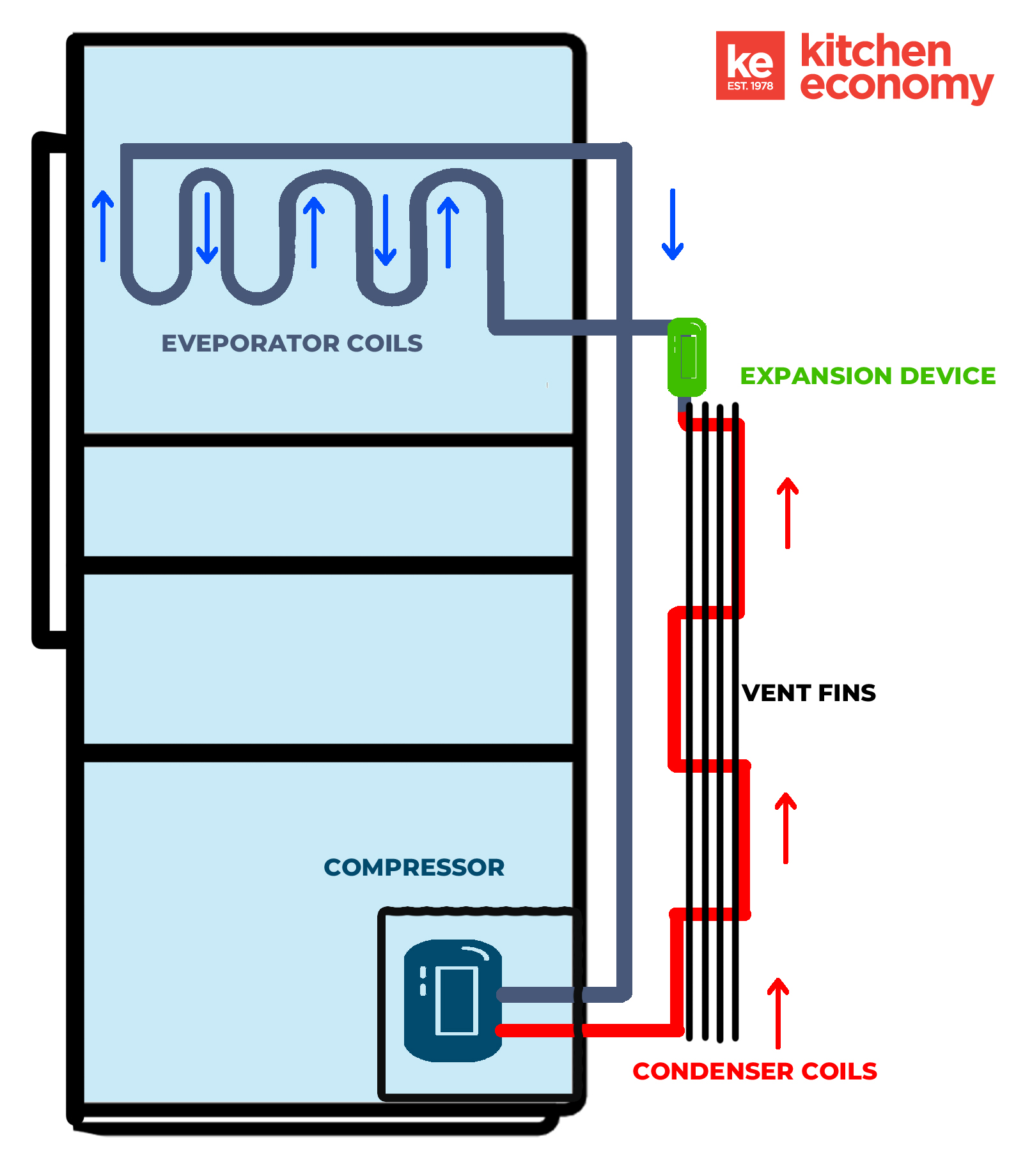
Knowing how your fridge and freezer work might come in handy when it comes to making them more energy-efficient and extending their life so that you can save on extra costs. After all, fridges and freezers usually run 24/7, which means that it is essential that they are running as efficiently as possible.
According to Energy Saving Trust, a 180-litre fridge freezer could cost around £39 a year to run compared to approximately £52 yearly for big 525-litre fridge freezers. To help you out, we've researched and written the following guide to help you understand how your fridge and freezer work and what you can do to keep them running smoothly and efficiently so you can minimise these costs.

THE COOLING PROCESS
Refrigerators are handy in minimising food waste. They keep the food fresh by providing an environment with a constantly low temperature which helps reduce the reproduction rate of harmful bacteria. Your fridge and freezer have built-in components that continually turn a refrigerant from liquid to gas and then condense that back into liquid.

Compressor
This component circulates refrigerant throughout the appliance, adds pressure to the warm part of the circuit, and makes refrigerant hot. The compressor pushes out the hot, compressed gas through the outside metal coils on the back/bottom of the refrigerator.
Condenser
The condenser located at the back of the refrigerator cools down and condenses the refrigerant by turning the gas back into liquid. Its purpose is to transfer heat from the refrigerant by condensing the refrigerant from vapour form to liquid form, giving off heat in the process, which in turn makes the condenser coils 'hot to the touch.'
Evaporator Coil
The evaporator coil is located inside the refrigerator and is the part that makes items in the refrigerator cold. As the refrigerant turns from liquid into a gas through evaporation, it cools the area around, providing optimum temperatures for food storage, so you can keep your food items fresher for longer.
Expansion Device
The expansion device is the piece of component that is used to control refrigerant flow in the system. It helps facilitate the change of higher pressure of liquid refrigerant in the condensing unit to lower the gas pressure of the refrigerant in the evaporator.

HOW TO KEEP YOUR APPLIANCE RUNNING SMOOTHLY
Keep Coils Clean
We often forget to clean our appliances; this is especially the case with the back of the fridge and freezer. Over time, various dust, lint, and debris can build on the condenser coils and lead your fridge to run less efficiently. You can keep your coils clean by using a brush with non-metallic bristles.
Set Appropriate Temperatures
Overcooling your fridge or freezer can make your appliance work harder than it should. Undercooling will cause your food to spoil quicker than it should. According to the United States Food and Drug Administration, your refrigerator temperature should be at or below 40° F (4° C), and the freezer temperature should be 0° F (-18° C). So make sure, you keep track of the temperature of your appliance at all times to save on extra costs.
Keep Your Fridge/Freezer Stocked
Keeping your refrigerator 3/4 will allow your appliance to operate at maximum efficiency. This allows for air circulation freely unhindered and freely moving, and your food item also acts as thermal batteries to help reduce the fridge and freezer's workload.

BROWSE OUR RANGE
Whether you're looking to replace your old fridge and freezer or furnishing a new home, here at Kitchen Economy, we have a wide range of refrigeration appliances and that will certainly help minimise food waste and energy costs.